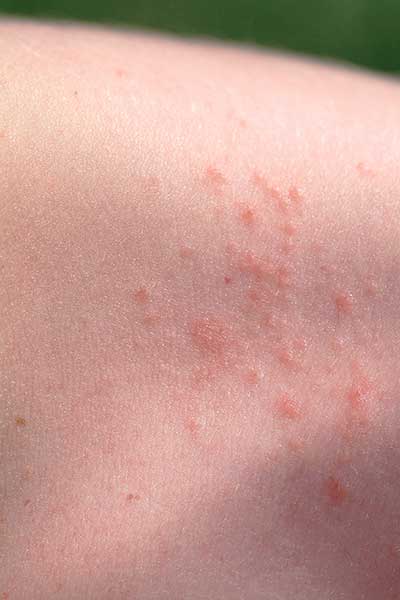Newborn Baby Heat Rash Treatment
About heat rash or prickly heat
Heat rash happens when the sweat glands get blocked and inflamed. If this happens, sweat can get trapped under the skin and small spots or blisters can develop.
Heat rash is very common in newborn babies in the first weeks of life. This is because their sweat glands aren't fully developed.
In older children, it can happen because of:
- overheating – for example, from overdressing
- hot or humid environments
- fever
- skin dressings or greasy ointments
- intense sweating from physical exercise.
Heat rash is also called prickly heat or miliaria.
Symptoms of heat rash or prickly heat
Heat rash appears as very small spots. On children with lighter skin, the spots might look red. On children with darker skin, the spots might look brown, purple or grey. Heat rash can also look like very small, clear blisters.
There might be only a few spots or blisters, or they might cover a large area of the body. They most commonly appear over the face and neck. They often appear in skin folds too, especially in the nappy area.
Heat rash is often very itchy.
The blisters can get infected with bacteria. If this happens, the blisters might fill with yellow or white pus. Your child might have a fever and increased sweating over their body.

Does your child need to see a doctor about heat rash?
Maybe. You should take your child to the GP if your child has:
- blisters that fill with yellow or green pus
- a rash that lasts more than 3 days.
You should also take your child to the GP if they have a rash and are also generally unwell, have a fever or aren't feeding well.
Not every rash is just a heat rash. Check with your GP if you're worried or in any doubt about the rash. Your GP can rule out other similar-looking rashes.
Treatment for heat rash or prickly heat
You can usually treat heat rash or prickly heat at home bymaking sure your child stays cool and dry and avoids getting sweaty. This might include:
- using air-conditioning if you live in a hot climate
- dressing your child in light cotton clothing
- avoiding too many layers when you dress your child or wrap your baby
- removing sweaty clothing or wet nappies regularly
- ensuring bedrooms are cool and ventilated
- drying your baby's skin folds after each bath.
Tohelp your child with itchiness, you can give them a bath in lukewarm water. It's best to avoid soap, because this can irritate your child's skin. Use a soap-free wash or a simple moisturising bath oil if needed.
Pressing a cool damp cloth onto the affected area might also help your child feel more comfortable.
If your child is scratching a lot, speak to your GP, pharmacist or child and family health nurse about creams that might help. These might include calamine lotion or corticosteroid cream. If you can minimise your child's scratching, you can reduce the risk of your child getting a bacterial infection that spreads from one spot to another. The rash should disappear in 2-3 days, but it can take longer than this.
Prevention of heat rash or prickly heat
Prevent heat rash by making sure your child doesn't get too hot. The treatment steps above can also help to prevent heat rash.
Newborn Baby Heat Rash Treatment
Source: https://raisingchildren.net.au/guides/a-z-health-reference/heat-rash

0 Response to "Newborn Baby Heat Rash Treatment"
Post a Comment